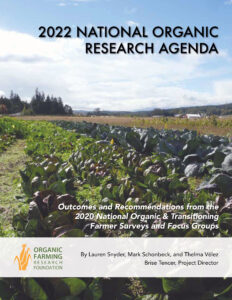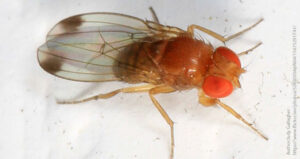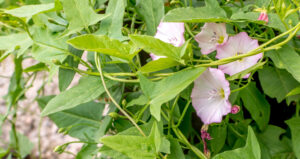USDA Announces Organic Transition Initiative Investments
FOR IMMEDIATE RELEASE
Funding toward Technical and Direct Farmer Assistance, Market Development
(August 22, 2022) – Today, the U.S. Department of Agriculture (USDA) announced the initial details on a historic $300 million investment in the Organic Transition Initiative. As part of its Food System Transformation Framework, the USDA is taking important steps toward supporting both organically-certified farmers and ranchers and producers who wish to transition into organic production. Organic Farming Research Foundation (OFRF) has been working alongside policymakers and industry partners to advocate for this crucial investment that supports producers’ adoption of organic management while building a resilient and equitable food system.
“Organic farming brings environmental and economic benefits to communities across the country, but has historically been under-invested in,” said Brise Tencer, OFRF Executive Director. “This is a meaningful investment in key programs to support organic and transitioning farmers. We have advocated for these goals for many years and it is exciting to see them come to fruition.”
“We are expanding USDA’s support of organic farmers to help them with every step of their transition as they work to become certified and secure markets for their products,” said Agriculture Secretary Tom Vilsack. The USDA’s announcement proposes four primary Organic Transition Initiative investments:
- Transition to Organic Partnership Program: Up to $100M in wrap-around technical assistance for organic transition across six regions and includes farmer-to-farmer mentoring. This program will be managed by USDA’s Agricultural Marketing Service (AMS).
- Organic Pinpointed Market Development Support: Up to $100M in organic supply chain improvements that provides more and better market options for producers seeking support in areas such as organic processing capacity and infrastructure, market access, and insufficient supply of certain organic ingredients. This program will be managed by USDA’s AMS.
- Organic Management: $75M for Natural Resources Conservation Service (NRCS) to develop a new Organic Management conservation practice standard and offer financial and technical assistance to producers who implement the practice.
- Transitional and Organic Grower Assistance (TOGA): $25M for USDA’s Risk Management Agency (RMA) to support transitioning and certain certified organic producers in reducing cost related to crop insurance coverage.
The USDA’s Organic Transition Initiative programming directly responds to research findings in OFRF’s 2022 National Organic Research Agenda (NORA). Overwhelmingly, organic and transitioning-to-organic producers surveyed found “farmer-to-farmer networks and mentoring are by far the most effective ways to obtain and share information.” Additionally, finding and developing markets for organic products was a leading non-production challenge among organic farmers surveyed in the 2022 NORA report.
“We are thrilled to see this investment,” said Gordon N. Merrick, OFRF Policy & Programs Manager, but also added, “Importantly though, we must remember that this is Agency action with a limited time table. We are committed to making sure we see meaningful support for organic agriculture be codified in the Farm Bill in 2023, which is just around the corner.”
With the 2023 Farm Bill season beginning in earnest after the finish of August recess, Members of Congress will start introducing marker bills and staking out positions on important issues. OFRF will be working closely with its partners on Capitol Hill to ensure there are the necessary resources and organic research for producers to transition to or maintain organic farming systems as seamlessly as possible.
###
About Organic Farming Research Foundation
Organic Farming Research Foundation works to foster the improvement and widespread adoption of organic farming systems. OFRF cultivates organic research, education, and federal policies that bring more farmers and acreage into organic production.
http://www.ofrf.org/
Policy Contact
Gordon Merrick, OFRF Policy & Programs Manager, gordon@ofrf.org
Media Contact
communications@ofrf.org




 Know Your Pest
Know Your Pest Field bindweed prefers full sunlight and moderately dry to dry conditions. It is relatively drought tolerant and flourishes in poor soil that contains sand, gravel, or hardpan clay. It is a competitive and persistent weed in a wide range of crops and rangelands. In organic systems the common method for controlling field bindweed is persistent and consistent tilling, requiring cultivation every two – three weeks over a multi-year period.
Field bindweed prefers full sunlight and moderately dry to dry conditions. It is relatively drought tolerant and flourishes in poor soil that contains sand, gravel, or hardpan clay. It is a competitive and persistent weed in a wide range of crops and rangelands. In organic systems the common method for controlling field bindweed is persistent and consistent tilling, requiring cultivation every two – three weeks over a multi-year period.